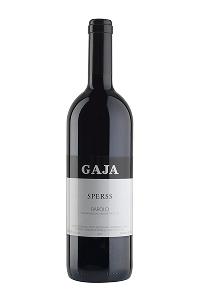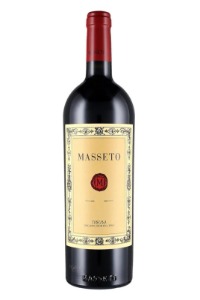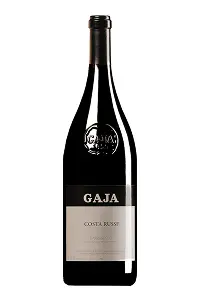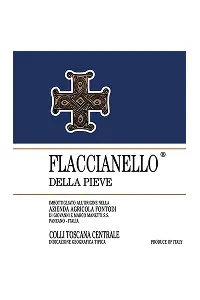The finest Italian wine of 2025: a taste of ‘dolce vita’
Italian wine is considered to be one of the best in the world, with bottles ranging from affordable to premium/collector’s price range. Join us as we explore the best Italian wines, grape varieties and ideal food pairings.
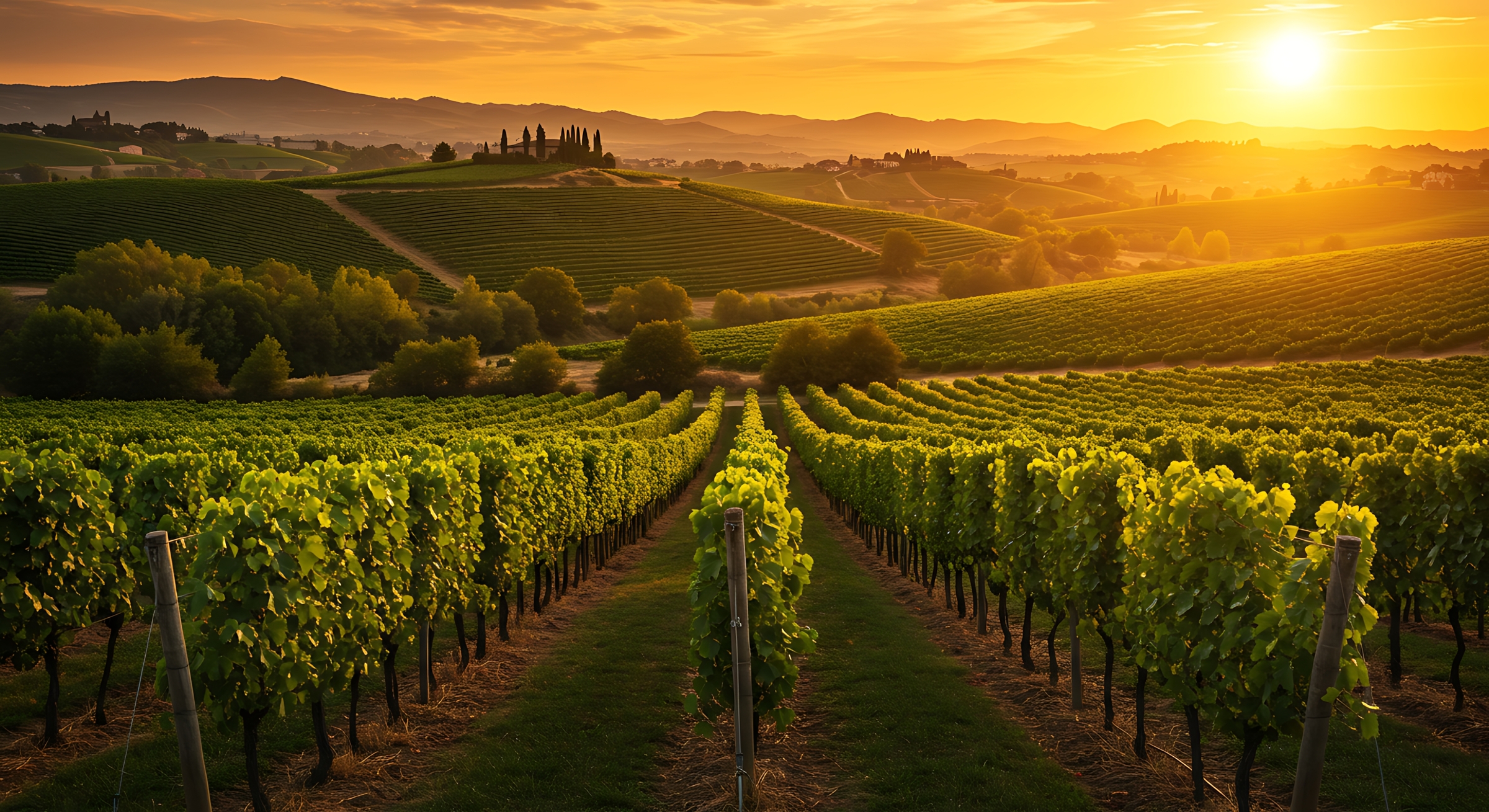
By
Last updated:
Table of Contents
10 Best Italian wine bottles to savor this year
Sperss Barolo – Gaja 2019
Piedmont (Italy)
Saffredi – Fattoria Le Pupille 2021
Tuscany (Italy)
Monte Lodoletta Amarone della Valpolicella – Dal Forno Romano 2016
Veneto (Italy)
Tenuta San Guido – Sassicaia 2022
Tuscany (Italy)
Giulio Ferrari Riserva del Fondatore – Ferrari 2010
Trentino-Alto Adige (Italy)
Marchesi Antinori Tignanello 2022
Tuscany (Italy)
Trebbiano d’Abruzzo – Emidio Pepe 2019
Abruzzo (Italy)
Calabrone – Bastianich 2018
Friuli-Venezia Giulia (Italy)
I Viaggiatori Rosso – Joaquin Wines 2020
Campania (Italy)
Senes Cannonau di Sardegna Riserva – Argiolas 2021
Sardinia (Italy)
Italy is one of the world’s top wine producing countries, accounting for roughly 19% of total global wine production in 2022. There are countless Italian wine regions growing both native and foreign grape varieties, which are bottled either as single varietals or blends.
In the table above, you can explore our curated selection of the best Italian wines from 10 of the country’s wine regions. These wines were handpicked considering factors like their favorable ratings by wine lovers like you, as well as high scores by critics.
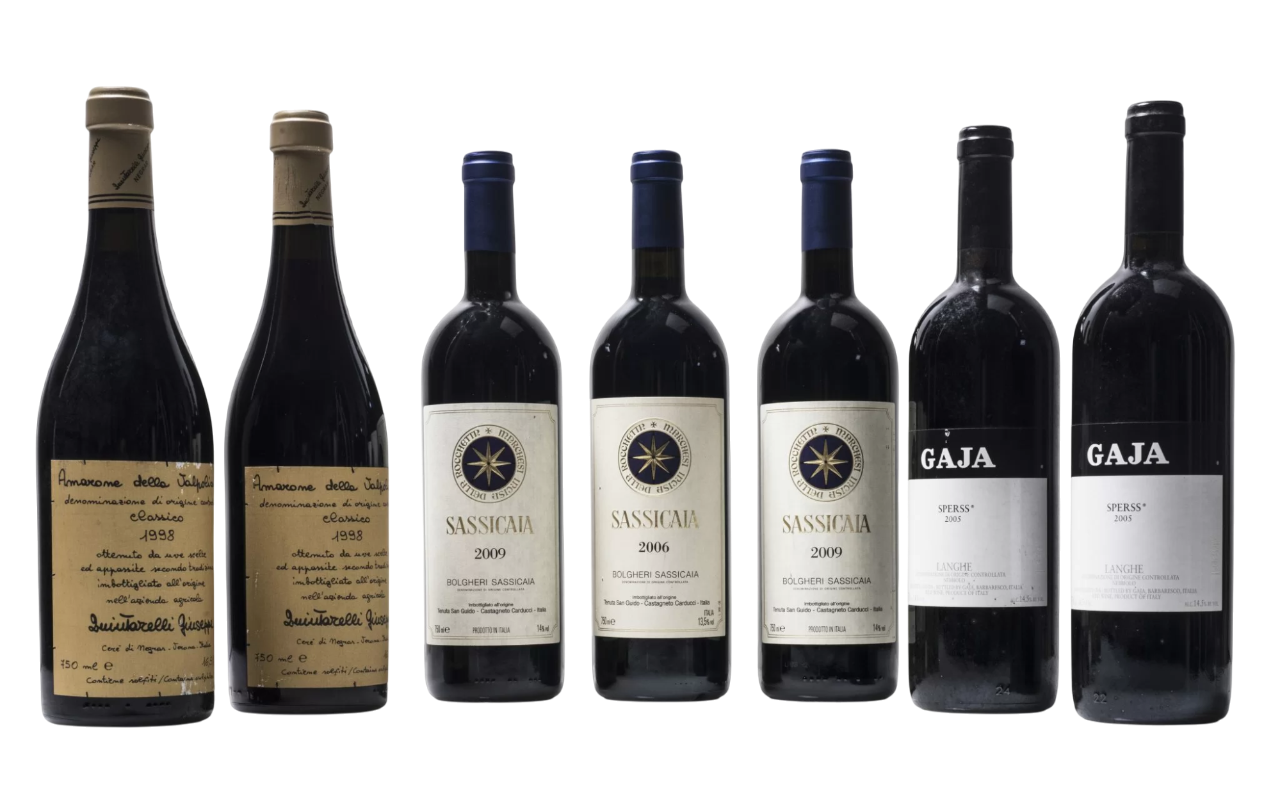
3 Collectible Italian wines worth investing in
Italy’s collectible wines represent some of the most prestigious offerings in the global fine wine market. Piedmont and Tuscany lead the charge with the iconic appellations of Barolo, Brunello di Montalcino and Super Tuscans, each known for their ability to age for decades.
What makes these wines highly desirable beyond their exceptional quality is their proven track record of appreciating over time, making them a smart addition to a wine investment portfolio. Below, discover our curated selection of the top collectible Italian wines of 2025, including tasting notes and food pairing suggestions to elevate the experience.
1. Masseto Tuscany 2022 – Masseto – Italy
2. Costa Russi – Gaja 2017 – Nebbiolo, Piedmont
3. Flaccianello della Pieve – Fontodi 2021 – Sangiovese, Tuscany
Italian wines and their perfect food pairings
Pairing Italian wines with food is a culinary adventure, with each region offering its unique blend of flavors and aromas that complement one another beautifully. The key is to match the intensity of the wine and dish, balancing acidity to create a harmonious taste on the palate. Here are some good Italian wines and regional food pairing recommendations to get the best taste profile:
| Ideal Food Pairing | Italian Wine Type | Top Italian Wine |
|---|---|---|
| Bruschetta, Salami, Mini quiches and Frittatas | Prosecco | Ruggeri Giustino B. Prosecco Extra Dry Superiore 2022 – Italy |
| Barolo braised meats, sausage ragú with tagliatelle, grilled pork chops | Barolo | Marchesi di Barolo Nizza Vinarei 2021 – Italy |
| Bistecche alla Pizzaiola, fresh egg pasta, monkfish stuffed with dried tomatoes | Barbaresco | Produttori del Barbaresco Barbaresco 2021 – Italy |
| Roast beef in Madeira sauce, Bolognese, Ribollita | Chianti Classico | Castello di Ama Chianti Classico San Lorenzo Gran Selezione 2020 – Italy |
| Pappardelle with wild boar ragú, Bistecca alla Fiorentina, Pecorino Toscano | Brunello di Montalcino | Podere Brizio Brunello di Montalcino 2019 – Italy |
| Beef filet en croûte, Gorgonzola, chocolate souffle | Amarone della Valpolicella | Serego Alighieri Vaio Armaron Amarone della Valpolicella Classico 2013 – Italy |
| Pasta alla Norma, Parmigiana, Prosciutto | Nero d’Avola | Planeta Santa Cecilia 2021 – Italy |
| Risotto al funghi porcini, Asiago, roasted vegetables | Montepulciano d’Abruzzo | Cataldi Madonna Toni Montepulciano d’Abruzzo 2021 – Italy |
| Grilled Chateaubriand steak, Lamb stew, Aged Parmesan | Taurasi | Salvatore Molettieri Taurasi Vigna Cinque Querce 2015 – Italy |
| Oysters in mignonette sauce, Seared scallop, Feta | Vermentino | Jankara Vermentino di Gallura Superiore 2024 – Italy |
| Fish crudo, risotto alla parmigiana, polenta with bagòss, ravioli | Franciacorta | Barone Pizzini Saten Franciacorta 2018 – Italy |
| Panettone, Charcuterie boards, Fruit tarts | Moscato d’Asti | Bricco dei Guazzi Moscato d’Asti 2021 – Italy |
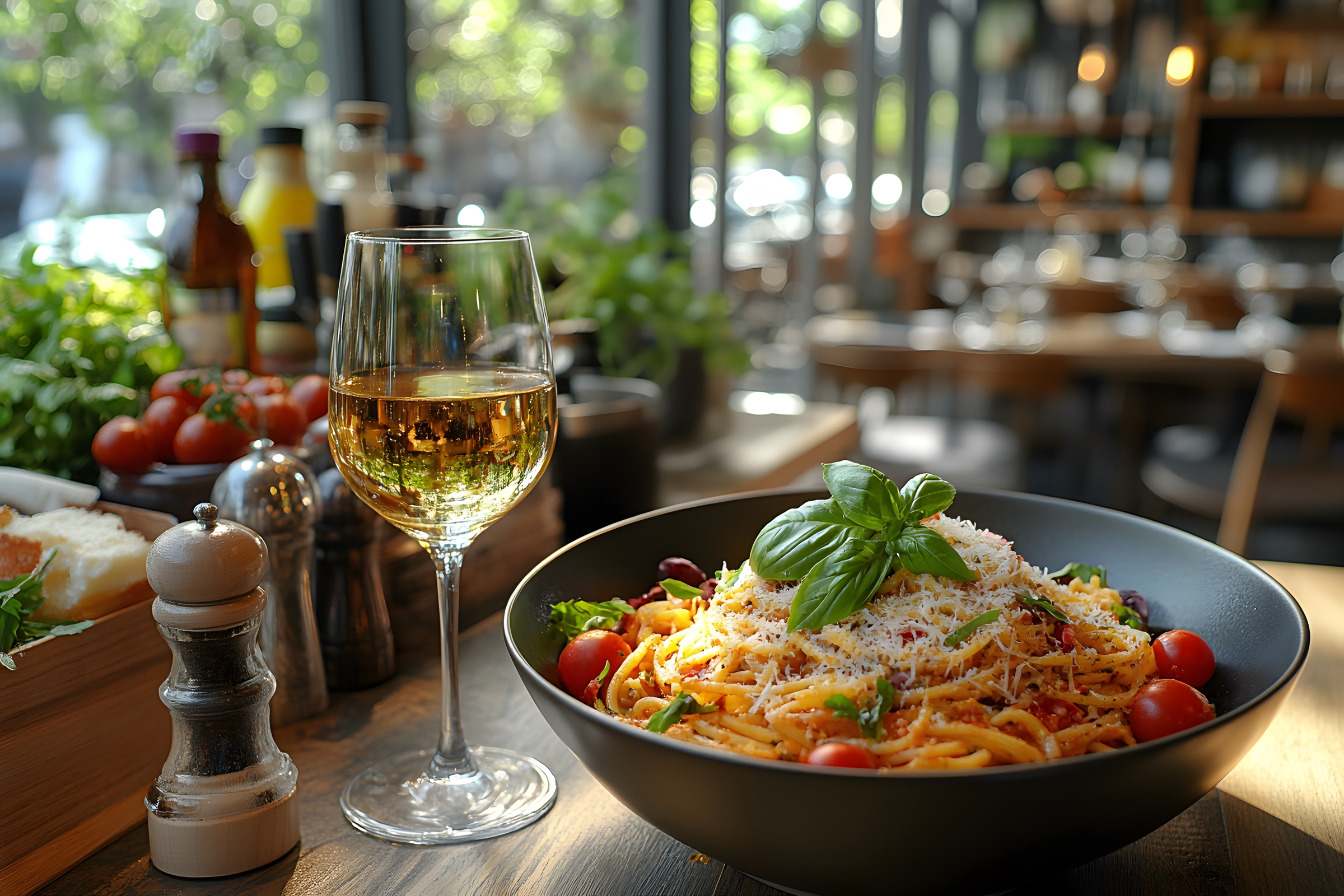
Italian wine labels and appellations explained
The Italian wine appellations are a system to describe the origin of wines, their dedicated areas of production and the rules winemakers must follow to ensure the quality of the wine produced. From the most controlled to the most generic wines, the Italian wine appellations are:
- Denominazione di Origine Controllata Garantita (D0CG) is the highest level of quality classification for Italian wines. It is awarded to wines from a controlled geographical origin, with guaranteed superior quality obtained by following strict production rules and criteria.
- Denominazione di Origine Controllata (DOC) represents a good quality wine with a controlled designation of origin. It indicates that the wine is produced in a specific geographical area and produced according to strict rules regarding grape variety, alcohol content, vineyard practices and winemaking methods.
- Indicazione Geografica Tipica (IGT) is an Italian wine classification that indicates that a wine comes from a specific geographical area but with fewer restrictions than DOC or DOCG wines. IGT gives winemakers more flexibility with grape varieties, although at least 85% of the wine must come from the specified wine area and meet the criteria required for production.
- Vino da Tavola (VDT) refers to ordinary wines with no specific designation of origin; these wines are produced with fewer restrictions on grape variety or production methods. VDT wines are simply referred to as ‘Vino Rosso’ or ‘Vino Bianco’ for red and white wine, respectively.
For a better understanding of the DOC and DOCG classification systems, here is a table breaking down the qualification criteria for both.
| Criteria | DOC | DOCG |
|---|---|---|
| Quality Guarantee | Controlled origin, but no additional guarantee | Controlled and guaranteed origin |
| Controlled and guaranteed origin | Must be grown according to the rules of appellation | Must pass a wine quality tasting panel |
| Wine Seal | The seal is not always required | There is a numbered government seal around the bottle’s neck |
| Production Requirements | Grape varieties, yield limits, winemaking techniques and aging periods | All those requirements, in addition to bottling the wine in its production area |
| Prestige | Brunello di Montalcino | Podere Brizio Brunello di Montalcino 2019 – Italy |
An overview of the history of Italian winemaking
Winemaking in Italy dates back to at least 4000BC, long before the Greeks arrived in the 8th Century BC. The Greeks introduced and spread sophisticated viticultural practices, naming the land “Oenotria,” which means “the land of trained vines”. Following the defeat of the Carthaginians, the Romans established large scale vineyards and trading networks in most coastal areas, eventually leading to the development of modern Italian winemaking traditions. There was a time when wine was so central to Roman life and trade that Emperor Domitian ordered the destruction of vineyards to free up land for food production.
Romans influenced modern Italian winemaking in many ways; they were the first to age wines in wooden barrels and they laid the groundwork for modern viticulture by classifying grapes and studying the effects of climate and terroir on wines. Roman wines tended to be stronger than modern Italian wines, so they often diluted them with water. They also favored sweet wines, which they modified with other ingredients like honey, herbs, salt and even chalk to improve the taste.
Today, Italian wines can be classified into:
- Italian sparkling wines are also called “Spumante”, and there are five major types which include Prosecco, Franciacorta, Metodo Classico, Lambrusco and Asti Spumante. The vibrant flavors and crisp acidity of Italian sparkling wines are meant to be enjoyed young and fresh with anything from light appetizers to richer entrees.
- Italian sweet wines come in white, rosé and red variants and a spectrum of sweetness, which includes delicate styles and rich, syrupy wines. Italian sweet wines may be sparkling like Moscato d’Asti, crafted as passito wines produced from dried grapes, such as Vin Santo, or even sweet red wines like Recioto della Valpolicella.
- Italian white wines include popular varieties like Pinot Grigio, Vermentino and Soave, which tend to be crisp and dry. White wines from Italy are categorised by their style into dry and sweet wines, as well as sparkling options. The wide range of flavors available is due to the diverse microclimates and regions in Italy.
- Italian rosé wines are fondly known as “rosato”. They offer a balance of fruitiness and acidity, with different colors ranging from pale to deep pink. Principal grape varieties used to make Italian rosé include Nebbiolo, Dolcetto and Barbera and well known examples include Cerasuolo d’Abruzzo and Chiaretto.
- Italian red wines are famous and iconic, beloved by wine enthusiasts worldwide for their powerful structure and flavors that make judicious use of native grape varieties. Some legendary Italian red wines are Amarone, Barolo, Barbaresco and Chianti, made from indigenous varieties Corvina, Nebbiolo and Sangiovese, respectively.
Italian wine regions from north to south
Italy has over 20 wine regions, broadly categorized into Northwest, Northeast, Central and Southern. Each of these areas has its own distinct climate conditions and grape varieties resulting in a wide spectrum of wine styles. The Italian wine country houses vineyards, historic wine houses, family run estates and boutique producers that work hand in hand to craft top rated Italian wines from both native and international grapes.
Here is a look at the major Italian wine regions and notable vineyards that offer scenic landscapes and a taste of the good life!
- Piedmont is nestled at the foot of the Alps mountains; this region holds the highest number of DOC and DOCG wines as well as the most internationally acclaimed wines such as Barolo and Barbaresco.
Notable vineyard: Marchesi di Barolo - Lombardy is famed for its metodo classico wines, which are Champagne style sparkling wines labelled as Franciacorta. Notable is also the region’s Oltrepò Pavese Pinot Noir.
Notable vineyard: Ca’del Bosco - Located in the north eastern part of the country, the region of Veneto is best known for its Valpolicella region, where the great red blends of Corvina, Rondinella and Molinara are made. Other notable productions include white wines and Prosecco.
Notable vineyard: Cantina Martinelli - Trentino-Alto Adige, renowned for its Alpine wines, is a mix of two main areas, with the crisp whites of Trentino and the aromatic wines of Alto Adige. The most relevant productions include Pinot Grigio, Sauvignon Blanc, Riesling, Gewürztraminer, Kerner and Müller-Thurgau. Reds include Schiava, Lagrein and Teroldego. Trentodoc produces notable traditional method sparkling wines.
Notable vineyard: Allegrini - Friuli-Venezia Giulia: located by the Adriatic Sea, a cool region renowned for its white grape varieties. The region produces high quality whites such as Pinot Grigio and Sauvignon Blanc but is also known for skin contact orange wines and refined Merlot and Refosco.
Notable vineyard: Castello di Spessa - Tuscany is, together with Piedmont, one of the pinnacles of Italian wine production. Located in central Italy, it is home to the noble grapes and investment worthy wines such as Chianti and Brunello di Montalcino. It is also the region where Super Tuscan wines originated.
Notable vineyard: Antinori nel Chianti Classico - Abruzzo is located in the central part of the country and is home to the red Montepulciano grapes. It boasts a mountainous terroir and Mediterranean climate, resulting in bold red good Italian wines with age worthy potential
Notable vineyard: Emidio Pepe - Sardinia produces mineral, saline wines due to hot and dry weather conditions and its seaside location. The region is distinguished for its red Cannonau (Grenache) and Carignano del Sulcis, both known for Mediterranean herb notes and firm structure. Key whites include Vermentino di Gallura DOCG, Nuragus and Monica in lighter red styles.
Notable vineyard: Cantina Ligios - Campania’s volcanic soils and oceanic climates contribute to a unique character of its wines. The region is famous for Taurasi made from Aglianico, one of Italy’s most structured and long lived red wines and for whites such as Fiano di Avellino, Greco di Tufo and Falanghina, each marked by strong acidity and mineral depth.
Notable vineyard: Tenuta San Francesco - Sicily is known for Etna Rosso and Etna Bianco, produced on volcanic slopes from Nerello Mascalese and Carricante. The island also produces major wines such as Nero d’Avola, Frappato and the Cerasuolo di Vittoria DOCG blend.
Notable vineyard: Oro d’Etna
Key Italian wine grape varieties
Italy is host to a remarkable variety of wine styles and grapes, including hundreds of native ones like Sangiovese, Trebbiano and Nebbiolo and international varieties such as Cabernet Sauvignon.
Below is an overview of some major Italian wine grape varieties, their characteristics and their most notable wines.
Italian red grape varieties
- Sangiovese (mainly cultivated in Tuscany and in the central regions) yields medium to full bodied reds with vivid acidity, red cherry, dried herbs, and earthy undertones. Its structure supports long refinement in bottles and in large casks, shaping many of the top wines in Italy.
Notable wine: Chianti - Nebbiolo is the grape behind some of the most celebrated good Italian wines. It is mainly cultivated in Piedmont and known for high tannin, penetrating acidity and aromas of tar, rose and red berries.
Notable wine: Barolo - Corvina is usually combined with Rondinella and other grape varieties to produce bold, rich wines. Mainly cultivated in Veneto, Corvina brings sour cherry, spice and almond notes, forming the backbone of Valpolicella blends.
Notable wine: Amarone della Valpolicella - Friulian Merlot often shows plum, forest herbs, tobacco and supple tannins offering a more restrained, terroir driven interpretation than many international examples.
Notable wine: Merlot - Nero d’Avola (Sicily and southern regions) produces full bodied reds with dark fruit, Mediterranean spices and firm yet polished tannins. Coastal and higher altitude plantings can deliver fresher and more mineral expressions of the best Italian wines.
Notable wine: Nero d’Avola - Montepulciano is valued for deep color, ripe blackberry fruit and lively acidity, yielding structured reds and the food friendly rosato style Cerasuolo d’Abruzzo.
Notable wine: Montepulciano d’Abruzzo - Cabernet Sauvignon is mostly cultivated in Lombardy and in central regions. Cabernet Sauvignon from Lombardy shows notes of cassis, cedar and a firm tannic structure, influenced by cooler Alpine or lake moderated sites.
Notable wine: Cabernet Sauvignon - Grenache is successfully cultivated in Sardinia delivering Cannonau wines with warm red fruit aromas, herbal notes and saline hints. The resulting wines seem to have higher anti-oxidants levels, a topic frequently discussed in the regional long life expectancy studies.
Notable wine: Cannonau
Italian white grape varieties
- Italian Pinot Grigio can be light and zesty or full bodied and complex (Trentino-Alto Adige). It is mainly cultivated in the northern regions of Trentino-Alto Adige and Friuli Venezia Giulia.
Notable wine: Pinot Grigio - Vermentino is cultivated both in the central regions and in Sardinia, resulting in wines with bright acidity, notes of citrus peel and Mediterranean herbs. Gallura’s granitic soils yield particularly defined and age worthy examples.
Notable wine: Vermentino - Trebbiano is mainly cultivated in Tuscany, yielding wines that are generally light and crisp, with a subtle floral character. It is widely used for still wines, base wines for Vin Santo, and blending.
Notable wine: Trebbiano Toscano - Chardonnay: a French wine grape varietal widely cultivated also in Italy. Italian Chardonnay shows apple, pear and pastry tones in still wines, and forms a key component of Metodo Classico sparkling wines, especially in Franciacorta. Styles vary based on oak and lees contact.
Notable wine: Chardonnay - Glera is the base grape for Prosecco, producing pale, aromatic sparkling wines with green apple, pear, white flowers and a persistent mousse.
Notable wine: Prosecco - Arneis is mainly cultivated in Piedmont and yields medium bodied whites with pear, chamomile, fennel and mineral notes. Frequently associated with Roero, where sandy soils give particularly elegant results.
Notable wine: Roero Arneis - Sauvignon Blanc from northern Italy combines vibrant acidity with tones of gooseberry, sage, elderflower and flint. Friulian examples often lean toward richer texture, while Alpine versions show heightened freshness.
Notable wine: Sauvignon Blanc
Italian wine terms you should know
European wine labels, especially Italian and French ones, may be difficult to understand when compared to US wine labels. European wine labels often emphasize the region where the grapes were grown, signifying the origin and quality of the wines. US labels, on the other hand, highlight the grape varietal used, provided that at least 75% of the grapes were used to make the wine. This section will help you understand Italian wine labels and some well known glossary terms you may come across, so you can find and enjoy more great offerings.
An Italian wine label usually contains information on the type of wine, its region, classification, name and producer name. Find some common Italian wine label terms below and their definitions.
- Annata: the vintage or year of harvesting
- Amaro: bitter wine
- Bricco/Bric: hill (particularly in Piedmont)
- Borgo: village
- Cantina: a cellar or winery
- Cascina: a farmhouse or wine estate
- Classico: wine from a classic wine growing area in a particular region
- Col Fondo: sparkling wine, typically from Veneto and Friuli, with unfiltered sediment
- Colli: hills, often used in regional names (e.g., Colli Euganei)
- DOC denotes a controlled designation of origin, signifying that the wine is produced in a specific geographical area, following strict rules concerning the grape varieties, winemaking methods and other factors that ensure authenticity.
- DOCG: the highest quality level of Italian wines that indicates that the wine comes from a specific region and meets strict production, authenticity and quality standards.
- Dolce: sweet wine with a significant amount of residual sugar
- Frizzante/Frizzantino: slightly sparkling wine
- IGT stands for Indicazione Geografica Tipica, a classification for Italian wine that indicates wine that comes from a specific geographical area, but with more relaxed production rules than DOC or DOCG wines.
- Imbottigliato all’origine: refers to wine that was bottled at the same winery where its grapes were grown
- Metodo classico: traditional method of producing sparkling wine which involves a secondary fermentation in the bottle
- Passito: wine produced from partially dried grapes
- Poggio: hill or elevated place, often seen in Tuscan wine names
- Recioto: a type of sweet wine made from dried grapes, often from Veneto
- Riserva: wines that have been aged for longer than the normal wines of the same denomination
- Rosso/Bianco/Rosato: Red/white/rosé wine
- Secco: dry wine
- Spumante: fully sparkling wine from any of the production methods
- Superiore: high-quality wine designation made from premium grapes
- Tenuta: farm holding, property, or wine estate
- Vendemmia: harvest/vintage
- Vigna/Vigneto: vineyard
- Vino bianco: white wine
- Vino rosso: red wine
- Vitigno: grape variety
FAQs on Italian wine
What makes Italian wine special?
Italian wine is special due to the diversity of the grapes, from bold and age worthy red wines to lighter bubbly whites. The wine country has an incredible number of indigenous grape varieties that are rarely found elsewhere in the world, such as the Sangiovese. There is also a rich culture and tradition surrounding viticulture in Italy and these ties are reflected in the bottles of wine themselves.
What can I eat with the best Italian wines in Italy?
The ideal food pairing for the best Italian wines in Italy differs according to the wine style and its taste profile. Bold red wines like Chianti Classico are paired with hearty tomato sauces, while lighter reds such as Montepulciano d’Abruzzo go well with grilled meats. As for white wines like Trebbiano, they are best savored with seafood and vegetables, but pastry is the perfect pairing choice for sparkling wines!
What are the major Italian wine regions?
The most prominent Italian wine regions are Piedmont, Veneto and Tuscany, known for the high quality table wines that they produce. Piedmont is famed for its Barbaresco and Barolo, which are made from Nebbiolo grapes; Veneto is home to the sparkling Prosecco wines, while Tuscany is synonymous with Sangiovese.
Which Italian wine is sweet?
Classic Italian wines that are sweet include Vin Santo, Moscato Bianco Passito and Recioto della Valpolicella. Moscato Rosa, Zibibbo and Barolo Chinato also offer rich, aromatic sweetness. These wines are perfect for pairing with desserts or enjoying on their own, providing a flavorful, smooth and indulgent sweet wine experience.
What is the best Italian wine?
The best Italian wine for you will depend on your preferences, as Italy offers a wide variety of styles, from bold, dry and tannic reds to sweet, sparkling options. Some of our favorite Italian wines include Valdicava’s Madonna del Piano Brunello di Montalcino Riserva 2016, Amarone della Valpolicella Classico 2017 by Giuseppe Quintarelli and Gaja’s Sori San Lorenzo 2017.
What are the Italian wine types?
Italian wine types include red, white and sparkling varieties. They are commonly made from native grapes like Sangiovese, Nebbiolo and Vermentino. International grape varieties such as Pinot Grigio and Cabernet Sauvignon are also cultivated. Popular Italian wine types include Amarone della Valpolicella, Montepulciano d’Abruzzo, Chianti, Prosecco and Vermentino.
How do I identify good Italian wines?
Italian wines are labeled according to 4 appellations, namely the DOCG, DOC, IGT and VGT wines. DOCG wines are guaranteed to be of superior quality as they have been vinified following strict rules. DOC wines are next in line, referring to those wines produced in a controlled area. For a better understanding of how to identify good Italian wines, check out our section on ‘Italian wine appellations above.
What is the Italian wine area called?
An Italian wine area can also be referred to as a wine region and the most influential ones are Tuscany, Piedmont and Veneto. Italy’s diverse landscape and weather conditions, combined with the country’s love of wine, have ensured that over 200 grape varieties are cultivated all over the country, with vineyards in almost every region.
What is the best Italian red wine to drink?
Our recommendations for the best Italian red wines include Masseto 2021, Costa Russi 2017 by Gaja and Fontodi’s Flaccianello della Pieve 2021. These wines are highly acidic, tannic and bold, ideal pairings for rich, hearty dishes like steak, grilled or cured meats, tomato based sauces and pasta.
Where can I find the top wines in Italy?
To find the top wines in Italy, check out ‘Best 10 Italian wines to savor’ right here on Wines Curated. Save this page for later, as we feature regularly updated lists of expert recommended wines and wine accessories, in depth information about the wine regions of the world, grape varieties and everything you need to become a connoisseur in no time!
